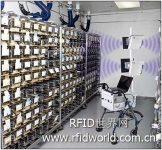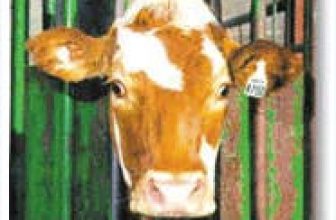
University of Florida uses RFID system to track laboratory animals
[ad_1]
The University of Florida (UF) now uses an RFID system to track thousands of rodents used in research and experiments. The school has been testing and expanding the application of the system last year. Currently, 6,000 cages of laboratory animals have been tracked and counted using RFID technology. By March 2008, the system will be used to track all 11,000 cages and a total of 35,000 rodents in the school.
The system provided by Dynasys, a data collection solution provider, helps the school’s laboratory animal management department better track the movement of each caged animal and saves the time spent by teachers on regular animal inventories.
The UF animal management department is responsible for the placement, feeding and care of experimental animals. The cost is directly deducted from the research funding. The cost for each animal is 84 cents a day. However, tracking thousands of caged animals in the laboratory on a regular basis is extremely time-consuming and often makes mistakes. Employees either visually check the handwritten card ID number attached to each cage or use a bar code to scan the bar code label of the cage.
Previously, UF employees used barcode scanners to scan cage labels, according to August Battles, head of the UF Nursing Veterinary and Animal Management Department. However, cages are often missed or placed in the wrong place, resulting in inaccurate data, and researchers often question the accuracy of the bill.
In 2006, August Battles sought an automated RFID system from TI. TI recommends that the school cooperate with Dynasys, also located in Florida, to develop a tracking system. Battles, UF engineering professors, and Dynasys representatives spent 6 months discussing and planning the implementation plan, and the installation was formally completed last winter.

Use RFID system to inventory laboratory animals
After adopting the new system, the staff of the Animal Management Department attached an EPC Gen 2 passive UHF tag to each cage. The tag was provided by Dynasys and embedded TI’s EPC Gen 2 chip. The ID number of the tag corresponds to the details of the research project and the project leader in which the caged animal participates in the web-based back-end system. There is also a card affixed to the cage with research information, placement agreement and the ID number of the cage printed on the card.
When performing the inventory, employees pushed a trolley past each caged animal. The trolley car has a mobile Intermec EPC Gen 2 RFID reader and a laptop computer running Dynasys software. The reader captures the unique ID number of the tag. Employees who perform the inventory can check how many caged animals and animal types there should be in this room in real time, and whether the number of RFID tag readings meets expectations. If the system recognizes that a caged animal does not belong to the room, the software will generate an alarm message.
After the inventory is completed, Dynasys software organizes all the inventory data and fills it into a form for the accounting department to use; then the data is transmitted to the school’s back-end system via a Wi-Fi connection. Animal managers can enter the system to view the management fees generated based on the tag reading data, or investigate missing cages.
After the system was put into use, the labor cost saved was almost immediately paid off, said Bob Scher, president of Dynasys. The large-scale experimental installation of a system, including hardware, software and installation, costs US$100,000.
Since the installation of the RFID system, the inventory accuracy rate has increased from 60% to 99%.
For laboratories not covered by Wi-Fi network, the mobile reader can store data until it receives the Wi-Fi signal; or plug the reader into a PC to download data information from the Ethernet.
[ad_2]





